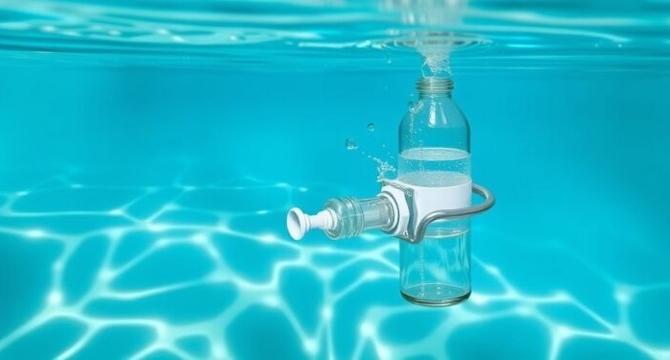Bioengineer
3d
207

Image Credit: Bioengineer
Revolutionary Water Purification Technology Converts Seawater to Potable Water with Minimal Chemical Use
- Researchers from the University of Michigan and Rice University have developed a new technology using carbon cloth electrodes that can effectively remove boron from seawater, a critical development in desalination and water purification. Boron, a naturally occurring element found in seawater, poses significant health risks and challenges for desalination plants globally. The newly developed carbon cloth electrodes can enhance the quality of treated water while streamlining operations and reducing operational costs. The new electrode design creates conditions favorable for boron capture without the use of costly chemicals and generates negative hydroxide ions during the desalination process to improve boron's negative charge, maximizing capture rates. The flexible design of the carbon cloth electrodes also holds promise in addressing other water pollutants.
- Conventional desalination membranes do not adequately retain boron due to its neutral state as boric acid, leading to expensive post-treatment stages that inflate operational costs. This limits the effectiveness of desalination plants and their contribution to addressing global water scarcity. The use of the carbon cloth electrodes offers an energy-efficient alternative that can reduce the overall cost of desalination while providing high-quality drinking water for millions worldwide.
- According to a study conducted by researchers, boron concentration in seawater is nearly twice the levels deemed safe by the World Health Organization, which has set conservative limits for water safety. This natural contaminant can compromise human health and agricultural productivity.
- Researchers are optimistic that the adjustable functional groups within the carbon cloth electrodes could enable targeted binding with varied pollutants, enhancing the efficacy of water treatment processes and expanding its applicability in environmental management.
- The new boron removal technology offers an engineering breakthrough for creating a sustainable and efficient water management system worldwide. The successful development of the technology could mean billions saved annually worldwide by reducing operational costs by up to 15%.
- By incorporating bioremediation, membrane technologies, and advancing electrode technology, researchers can foster greater efficiency or address a broader spectrum of contaminants than existing desalination methods.
- This cutting-edge research emphasizes how interdisciplinary collaboration can tackle real-world problems affecting millions globally and create a greener, more sustainable world with access to clean water for all.
- The success of the technology depends on the adoption of desalination plants and the engagement of water treatment facilities in implementing such innovations, government support, and increasing public awareness of water resource issues. Transforming seawater into safe drinking water provides an essential service, ensuring that rising populations have reliable access to this most critical resource.
- As the world transitions to more innovative water purification approaches, this new technology will bring clean drinking water closer to those who need it, especially in developing regions where water scarcity is most acute.
- The potential implications of this scientific breakthrough are enormous, particularly in the context of global water scarcity. With projections indicating freshwater supplies will only satisfy 40% of demands by 2030, the need for effective water treatment technologies is more immediate. The technological breakthrough presents a monumental step toward enhancing the accessibility of safe drinking water globally.
- Innovation around the electrode’s design could propel research efforts to create a greener and more sustainable world and render meaningful solutions to persistent environmental challenges. The intersection of materials science and chemical engineering showcased in this work could inspire future technological endeavors aimed at enhancing global access to clean water.
Read Full Article
12 Likes
For uninterrupted reading, download the app